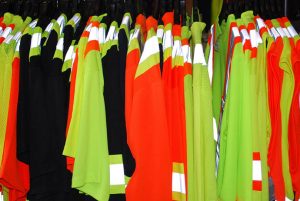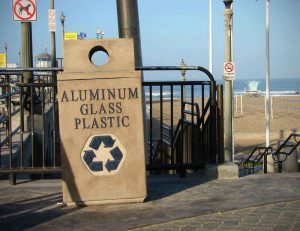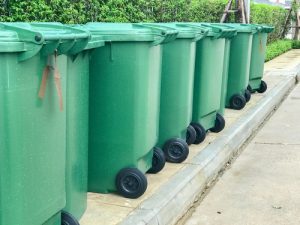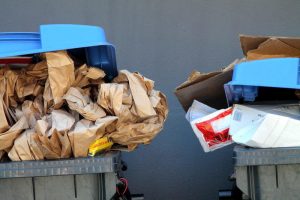 Waste and recycling haulers had slightly fewer fatal workplace injuries in 2016 than the year earlier, according to figures from the federal government.
Waste and recycling haulers had slightly fewer fatal workplace injuries in 2016 than the year earlier, according to figures from the federal government.

 Waste and recycling haulers had slightly fewer fatal workplace injuries in 2016 than the year earlier, according to figures from the federal government.
Waste and recycling haulers had slightly fewer fatal workplace injuries in 2016 than the year earlier, according to figures from the federal government.
 A research paper on individual steps to reduce greenhouse gas emissions has precipitated a host of mainstream media stories, many of which aren’t kind to recycling.
A research paper on individual steps to reduce greenhouse gas emissions has precipitated a host of mainstream media stories, many of which aren’t kind to recycling.
 Global packaging producer Sonoco recycled the equivalent of 57 percent of the packaging it placed on the market last year.
Global packaging producer Sonoco recycled the equivalent of 57 percent of the packaging it placed on the market last year.
 When it comes to the way states measure materials diversion, it’s less apples to oranges and more apples to 49 different types of fruit. That makes it difficult to comprehensively assess the industry.
When it comes to the way states measure materials diversion, it’s less apples to oranges and more apples to 49 different types of fruit. That makes it difficult to comprehensively assess the industry.

Jessica Branom-Zwick, Cascadia Consulting Services
Similar to the material stream itself, the industry is undergoing a shift – one in which basic diversion rates no longer suffice to tell the story about program effectiveness.

Keith Ellison speaks at the 2017 Resource Recycling Conference.
In a rousing speech to recycling leaders, U.S. Rep. Keith Ellison explained how pushing forward on materials diversion will lead to a higher quality of life for everyone.
 Last year, America’s most populous state notched a 44 percent recycling rate, down from 47 percent in 2015 and 50 percent in 2014, according to government figures.
Last year, America’s most populous state notched a 44 percent recycling rate, down from 47 percent in 2015 and 50 percent in 2014, according to government figures.
![]() Connecticut brings material consistency to its residential program rules. That news is part of our roundup of recent materials recovery updates from U.S. states (and one Canadian province).
Connecticut brings material consistency to its residential program rules. That news is part of our roundup of recent materials recovery updates from U.S. states (and one Canadian province).
 Materials recovery in the Lone Star State contributed $3.3 billion to the state’s economy in 2015, according to a new report.
Materials recovery in the Lone Star State contributed $3.3 billion to the state’s economy in 2015, according to a new report.
 Less than one-quarter of the fiber used last year by consumer products company Kimberly-Clark came from recycled sources, the lowest percentage in at least six years.
Less than one-quarter of the fiber used last year by consumer products company Kimberly-Clark came from recycled sources, the lowest percentage in at least six years.
